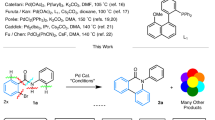Abstract
After a short introduction to the general phenomenon of chirality, the implications for synthesis and application of chiral drugs are discussed. In a first part, the historical development is briefly described. Up to the 1950s, most medications were either of natural origin, or made semi-synthetically from natural products. In these cases, only one enantiomer was usually present, i.e., the drugs were used as single enantiomers. This changed when totally synthetic drugs began to dominate the market, since these drugs were usually prepared, tested and applied as racemates. Due to the observation of negative effects such as the Thalidomide (Contergan) tragedy, stricter regulations were introduced and as a consequence, chiral drugs are now almost exclusively applied as single enantiomers. In a second part, the challenges for the industrial synthesis of chiral drugs are discussed. The various approaches to prepare enantiomerically pure compounds are briefly described and discussed in the context of industrial process development. Important for the choice of the production technology are criteria such as time constraint, complexity of the molecule, cost considerations and maturity of the technology.




Similar content being viewed by others
References
Blaser HU (2012) Industrial asymmetric hydrogenation. In: Crawley ML, Trost BM (eds) Applications of transition metal catalysis in drug discovery and development. Wiley, New York, pp 315–342
Blaser HU, Pugin B, Spindler F (2008) Asymmetric catalysis—industrial processes. In: Horvath IT (ed) Encyclopedia of Catalysis (on-line), Wiley-Interscience, 2nd edn, Accessed 20 Nov 2012. http://onlinelibrary.wiley.com/doi/10.1002/0471227617.eoc025/abstract
Blaser HU, Pfaltz A, Wennemers H (2012) Chiral compounds. In: Ullmann’s Encyclopedia of Industrial Chemistry. On-line edition. Accessed 20 Nov 2012. http://onlinelibrary.wiley.com/doi/10.1002/14356007.a18_177.pub2/abstract
Busacca CA, Fandrick DR, Song JJ, Senanayakea CH (2011) The growing impact of catalysis in the pharmaceutical industry. Adv Synth Catal 353:1825–1864
Carey JS, Laffan D, Thomson C, Williams MT (2006) Analysis of the reactions used for the preparation of drug candidate molecules. Org Biomol Chem 4:2337–2347
de Camp WH (1989) The FDA perspective on the development of stereoisomers. Chirality 1:2–6
Gal J (2006) Chiral drugs from a historical point of view. In: Francotte E, Lindner W (eds) Chirality in drug research. Wiley-VCH, Weinheim, pp 3–26
Hutt AT, Valentova J (2003) The chiral switch: the development if single enantiomer drugs from racemates. Acta Facultatis Pharmaceuticae Universitatis Comenianae, Tomus L, pp 7–23
Muller GW (1997) Thalidomide: from tragedy to new drug discovery. Chemtech 27(1):21–25
Author information
Authors and Affiliations
Corresponding author
Additional information
This contribution is the written, peer-reviewed version of a paper presented at the conference “Molecules at the Mirror—Chirality in Chemistry and Biophysics”, held at Accademia Nazionale dei Lincei in Rome on October 29–30 2012.
Rights and permissions
About this article
Cite this article
Blaser, HU. Chirality and its implications for the pharmaceutical industry. Rend. Fis. Acc. Lincei 24, 213–216 (2013). https://doi.org/10.1007/s12210-012-0220-2
Received:
Accepted:
Published:
Issue Date:
DOI: https://doi.org/10.1007/s12210-012-0220-2




